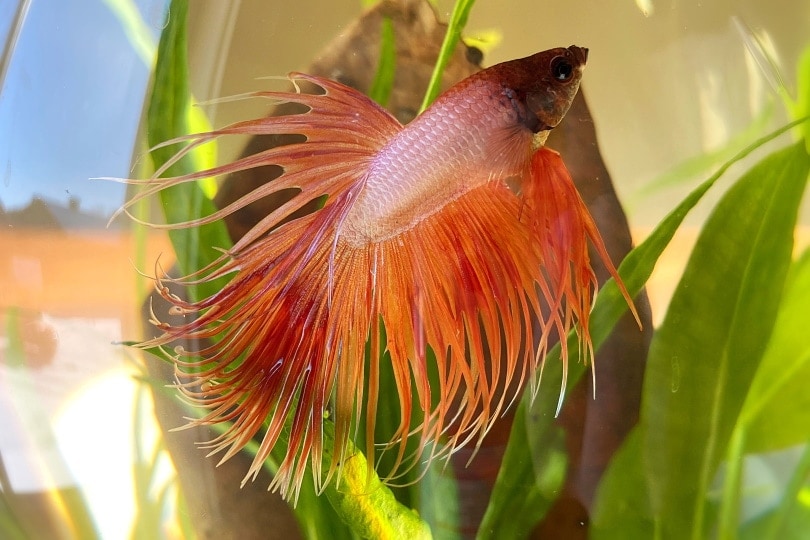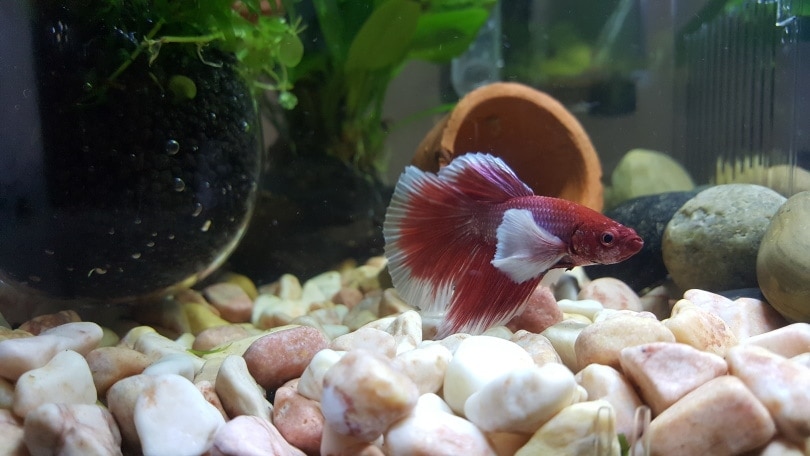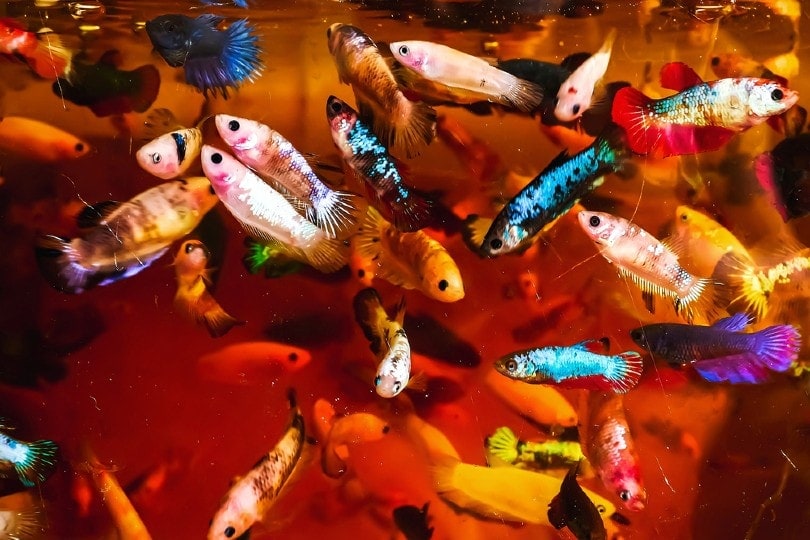Butterfly Betta Fish (Delta Tail): Care Guide, Pictures, Lifespan & More

Updated on
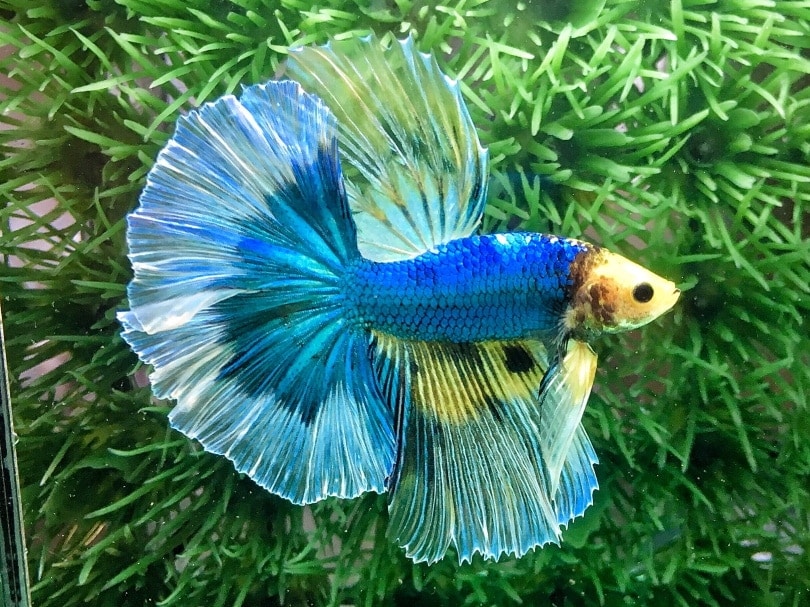
Click to Skip Ahead
Betta fish, also commonly known as the Siamese fighting fish, has become a popular fish species among breeders. Because of this, Butterfly Bettas have been selectively bred over the years to create unique and different varieties of betta fish.
The types of betta fish are classified according to tail type, tail type, plus color, colors, and patterns.
One of the common classifications is the Butterfly Betta (Delta Tail). Betta fish with the butterfly pattern has a single solid body color that stretches into the base of the fins.
The color covers a particular area, while the rest of the fins are pale or translucent. Ideally, these fish breeds have two or three colors, with one-half to one-third of their bodies displaying each color.
The Delta Tail betta has a tail that is roughly triangular in shape. This narrows near the body and extends out in a rounded edge at the end. It gets its name from the Greek letter d.
With all these unique and vibrant features, how do you take care of the Butterfly Betta? Here’s a breakdown.
Quick Facts About Butterfly Betta
| Species Name: | Betta splendens |
| Family: | Osphronemidae |
| Care Level: | Moderate |
| Temperature: | 74–80° F (23–27° C) |
| Temperament: | Fiesty and aggressive |
| Color Form: | Multi-color, 2 to 3 colors |
| Lifespan: | 2–4 years |
| Size: | 2–3 inches |
| Diet: | Carnivore |
| Minimum Tank Size: | 10 gallons |
| Tank Set-Up: | Freshwater with plants and substrate |
| Compatibility: | Low, housed as a single species or with shoaling and peaceful species. |
Butterfly Betta Overview

Butterfly Betta is one of the most common patterns among the betta fish species. With two to three colors, this breed is a famous tropical fish initially from Asia. They are now commonly found in Thailand, Vietnam, and Cambodia.
As one of the common aquarium fish species, Butterfly Bettas are listed as vulnerable species by the International Union for Conservation of Nature (IUCN). They have become so popular due to their vibrant colors, increasing their demand in the pet trade.
Breeders have continued to develop more of these Butterfly bettas with different color variations. Therefore, it’s much easier to find them at your local pet store.
Despite the stunning colors, these fish breeds are known for their violent nature, hence the name fighting fish. They engage in intense fights with other tank mates as well as their own kind.
With proper care, Butterfly Bettas can live an average lifespan of 2–4 years. To promote healthy living, the aquarium keepers must ensure the fish gets the necessary nutrients, has a healthy habitat and is well cared for against diseases and infections.
How Much Do Butterfly Bettas Cost?
On average, the Butterfly Bettas cost about $10–$15. This price differs depending on the breeder and store you buy your fish from.
Like other animals and pets, the price will go up based on color, rarity, and health. Since these Bettas are pretty colorful, the breeder might vary the price depending on the uniqueness and the demand of the specific fish species.
Once you purchase your fish from the local aquarium, you need to budget and factor in the costs you will incur when taking care of the Butterfly Betta. To take care of your fish, you need to buy a tank, filter, gravel, toys, plants, lighting, and a heater. On top of these, there are recurring expenditures on electricity, food, and medication.
When shopping, ensure you get your fish from a reputable breeder, aquarium, or pet store. This will save you a lot of money and prevent you from getting a sick pet.
Typical Behavior and Temperament
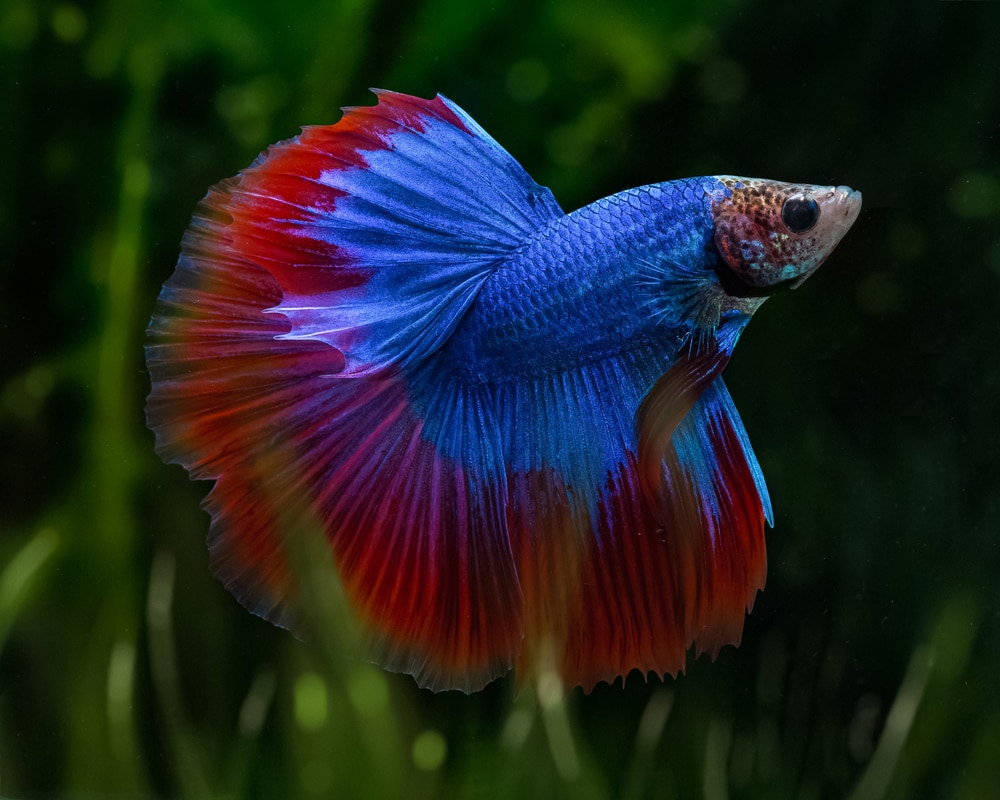
Butterfly Bettas are some of the most aggressive freshwater fish. Thanks to their combat skills, they earned the name the Siamese Fighting Fish. Because of this temperament, these fish species are better kept alone.
Both female and male Butterfly Bettas flare their gills to threaten other tank mates. They are very territorial and aggressive and will fight anyone that interferes with their space. However, females are less aggressive than their counterparts, and, therefore, can co-exist with other tank mates under observation.
Male Butterfly Bettas can fight to the death. Unlike the wild, where they can hide, they have no place to hide in the aquarium. These breeds fight their own kind; hence if you can, it’s best to separate them into their own individual tanks.
Appearance & Varieties
Butterfly Bettas are some of the most beautiful fish species. These tropical breeds are colorful with large and majestic fins. The Siamese Fighting Fish in the wild and those bred in captivity differ in shape and color of their fins.
Fish species with this pattern have two to three different color variations. Because of improved breeding, the Bettas bred in captivity are more radiant and have brighter colors. Breeders use the different layers of pigmentation on the fish’s skin to make the color permanent when breeding.
Because of this experimentation, some fish species have multi-colored fins and tails. In addition, you’ll notice that the colors on your Butterfly Betta will intensify when they start fighting to intimidate a rival or during breeding to impress a mating partner.
You can easily tell apart the female and the male. Females have smaller fins and bodies. They also have reduced colors.
On average, this Butterfly Betta grows up to 3 inches. Since the females have smaller or reduced physical features, they grow up to 2.5 inches.
How to Take Care of Your Butterfly Betta
If you want your Butterfly Betta to have a healthy life, you need to properly take care of it and provide the proper conditions. This involves having a clean and suitable aquarium. The quality of the aquarium has a significant effect on whether your Betta survives or not.
Habitat, Tank Conditions & Setup
In their natural habitat, Butterfly Bettas survive in freshwater rice paddies and river basins. In these zones, the water is shallow, warm, shallow, and slow-moving. These areas also have a lot of vegetation. Therefore, you’ll need to recreate these similar conditions for your fish.
Here’s all you need to know about setting up a fish tank for your Butterfly Betta.
Tank Size
Despite their small size, Butterfly Bettas shouldn’t be housed in a bowl. They require a lot of space to move around and swim. You can place them in a tank size of approximately 5 to 10 gallons, depending on how many Bettas you are keeping.
Placing them in a cramped space will damage their long fins as they swim. If you add more than one fish species or another species to the aquarium, you should consider the 10-gallon tank.

Water Temperature
Siamese Fighting Fish prefer relatively warm water that mimics the tropical climate. The temperatures should ideally be 74–80° F (23–27° C). To maintain this temperature, you can include a submersible water heater. Avoid heaters that could overheat the water and harm the fish.
pH levels
The pH level of the water is very critical. Ideally, it should be 6.8–7.4 and checked every week. You can buy a testing kit from your local pet store to make it easier to monitor the levels.
Lighting
When adding lighting for your Butterfly Betta, ensure the water tank is not under direct sunlight. For artificial light, put it on for 12 hours daily and switch it off to control the rate of your algae growth.
Filtration

A good aquarium must have a filtration system that works well. Since these fish breeds are used to slow-moving waters, the filter helps in balancing the flow rate.
The filter’s primary role is to aerate, circulate and filter the water in the aquarium. It also helps in the removal of toxic wastes from the tank.
The filter should suit the size of your tank for it to work efficiently.
Substrate
A fish tank is not complete if it doesn’t have a substrate. Before adding water, you should add a substrate that can be smooth gravel at the bottom of the tank. Ensure that the substrate doesn’t have rough edges to avoid damaging your Butterfly Betta’s fins.
Plant Matter
Just like in their natural habitat, these Bettas will enjoy the tank if there’s some flora. Select some artificial plants that create a similar tropical background for your pets to make them more comfortable.
Are Butterfly Betta Good Tank Mates?
For such an aggressive breed, it’s challenging to choose a tank mate. They are very territorial, which makes it hard to pair up with other fish breeds. However, if you want to introduce some other species, you should understand which ones can co-exist with these Bettas.
Compatibility with Other Butterfly Bettas
If the Butterfly Bettas are both males, you should not put them together in one tank or even close to each other. As long as they can see each other, they’ll become stressed and aggressive.
If you want to keep a female and a male, it should only be for breeding purposes. The male will tend to be less violent, but you should also include some hiding places for the female.
Two or more females can co-exist much better in the same tank. However, it’s still better to avoid this scenario if you can.
Suitable Tankmates for Butterfly Bettas
For your Butterfly Bettas, you should house them with calm and peaceful breeds. You can also go for bottom feeders because Bettas spend most of their time at the top level of the aquarium.
Shoaling fish also make good companions because they are faster, allowing them to escape territorial spaces. It’s also hard for a specific fish to be bullied more than once.
Some of the species that can co-exist with your Butterfly Betta include Cory Catfish, Neon Tetras, Feeder Guppies, Endlers, Fire Rasboras, Red Cherry Shrimp, and African Dwarf Frog.
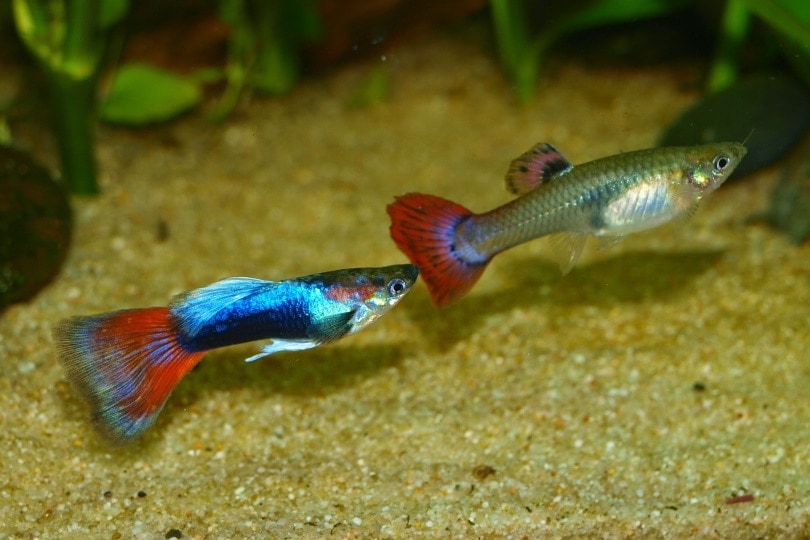
Unsuitable Tankmates for Butterfly Bettas
You should avoid housing your Butterfly Bettas with some species because they are too aggressive and are known for fin nipping. They include Tiger Barbs, Rainbow Shark, Red Finned Shark, and Cichlid.
What to Feed Your Butterfly Betta
Butterfly Bettas are carnivores; therefore, they require a lot of protein in their diet. They feed on insects and insect larvae in the wild; therefore, you should try and recreate these diets when keeping them in the aquarium. They have an upturned mouth that helps them grab any small insects that fall into the tank.
You can feed your fish a mix of pellets and flakes that you can easily get from the pet store. In addition, you can add some dry frozen worms or live worms. Daphnia, brine shrimp, bloodworms, tubifex, glassworms make excellent nutritious foods.
Fish species in the aquarium can eat non-stop, therefore ensure you don’t overfeed them. Fed them 2 to 3 times a day and remove any excess food after a few minutes to reduce the chances of water contamination.
Keeping Your Butterfly Betta Healthy
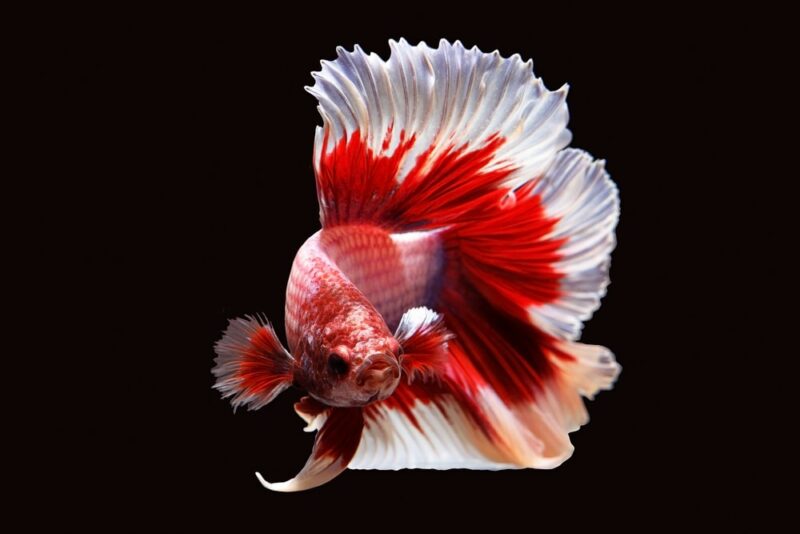
The Butterfly Betta is one of the hardiest aquarium fish. However, they can get sick like any other fish species.
Because of their aggressiveness, they are highly prone to injuries. When they fight, most of them end up with open wounds that can lead to infections. Also, if the substrates or decorations are sharp or rough, they could injure your Betta’s fins.
Butterfly Bettas get diseases if the water in the fish tank is contaminated. You can prevent this by making regular water changes. Every week, it’s advisable to make a 20% water change to keep your Betta fish safe and healthy.
These fish species are commonly affected by fin rot. This bacterial infection affects their fins, and they start rotting away. Once you spot this issue, it’s advisable to treat it right away before it spreads to other parts of the body.
Breeding
This is the only period that the male and female Butterfly Betta should be kept together. Breeding should be done under careful observation to prevent any fights and injuries. Because they have a short life span, they can breed within one year.
To prepare them for breeding, you need to feed them high-quality foods in small amounts to keep them healthy. Once you put them together, the tank temperature should be at the higher end at about 75–80°F.
If the female is interested in breeding, the colors on her skin will darken and display vertical stripes. On the other hand, when the male is interested, the colors will darken as well, and he will start to build a bubble nest.
Once they have been bred successfully, the male should be removed immediately. Otherwise, they might swallow their own babies.
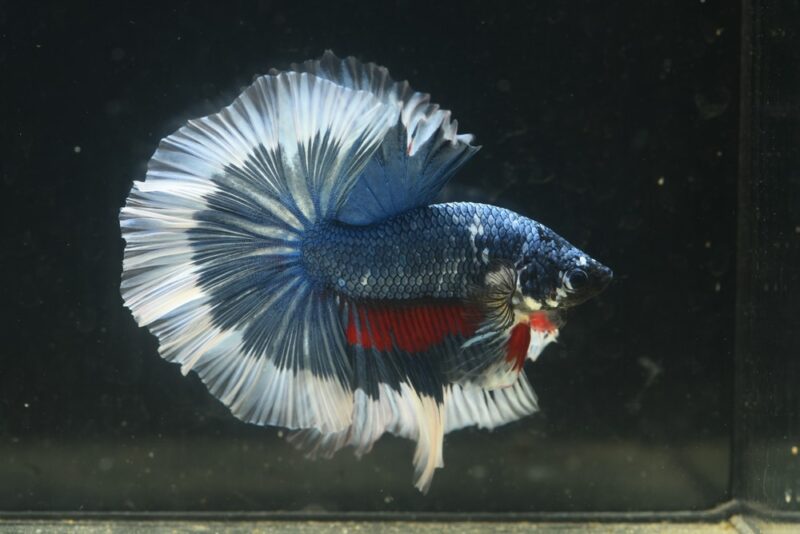
Are Butterfly Bettas Suitable For Your Aquarium?
Butterfly Bettas are suitable for your aquarium due to their vibrant colors. However, they tend to be very aggressive; therefore, you’ll have to get a separate fish tank for the Betta if you have a community fish tank. These fish breeds don’t co-exist well with their kind, hence need to be kept alone.
You should only introduce the male and female Butterfly Bettas in one tank during breeding. During this time, you should closely monitor them for any aggressiveness.
If you have some peaceful and calm species which are mainly bottom feeders, you can house them with your Butterfly Betta. They’ll get along perfectly because they are not aggressive.
Featured Image Credit: Rifkong, Shutterstock


